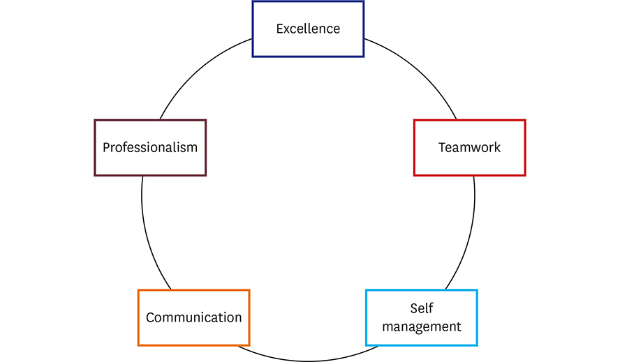1. Weinberger SE, Pereira AG, Iobst WF, Mechaber AJ, Bronze MS, et al. Competency-based education and training in internal medicine. Ann Intern Med. 2010; 153(11):751–756.

2. Sullivan G, Simpson D, Cooney T, Beresin E. A milestone in the milestones movement: the JGME milestones supplement. J Grad Med Educ. 2013; 5(1):Suppl 1. 1–4.

3. Kim S, Kim SS, Kim JY. Working condition, health and perceived patient safety among doctors in training. Health Soc Welf Rev. 2015; 35(2):584–607.
4. Gilhooly J, Schumacher DJ, West DC, Jones MD. The promise and challenge of entrustable professional activities. Pediatrics. 2014; 133:Suppl 2. S78–S79.

5. ten Cate O. Trust, competence, and the supervisor's role in postgraduate training. BMJ. 2006; 333(7571):748–751.

6. Hoffmann H, Oertli D, Mechera R, Dell-Kuster S, Rosenthal R, Reznick R, et al. Comparison of Canadian and swiss surgical training curricula: moving on toward competency-based surgical education. J Surg Educ. 2017; 74(1):37–46.

7. Schultz K, Griffiths J. Implementing competency-based medical education in a postgraduate family medicine residency training program: a stepwise approach, facilitating factors, and processes or steps that would have been helpful. Acad Med. 2016; 91(5):685–689.
8. Carraccio C, Wolfsthal SD, Englander R, Ferentz K, Martin C. Shifting paradigms: from Flexner to competencies. Acad Med. 2002; 77(5):361–367.
9. Lee M, Ahn D, Kim M, Kim Y, Bae J. Development of Generic Curriculum for Graduate Medical Education. Seoul: Research Institute for Healthcare Policy, Korea Medical Association;2010.
10. Han J, Lee M, Huh Y, Kwon B, Kim M. A Study on Role of Korea's Doctors. Sejong: Ministry of Health and Welfare;2013.
11. Education ACoGM. General Competencies: Minimum Program Requirements Language. Chicago, IL: ACGME;1999.
12. Ripp JA, Bellini L, Fallar R, Bazari H, Katz JT, Korenstein D. The impact of duty hours restrictions on job burnout in internal medicine residents: a three-institution comparison study. Acad Med. 2015; 90(4):494–499.
13. West CP, Dyrbye LN, Erwin PJ, Shanafelt TD. Interventions to prevent and reduce physician burnout: a systematic review and meta-analysis. Lancet. 2016; 388(10057):2272–2281.

14. Lucas BP, Trick WE, Evans AT, Mba B, Smith J, Das K, et al. Effects of 2- vs 4-week attending physician inpatient rotations on unplanned patient revisits, evaluations by trainees, and attending physician burnout: a randomized trial. JAMA. 2012; 308(21):2199–2207.






 PDF
PDF Citation
Citation Print
Print




 XML Download
XML Download